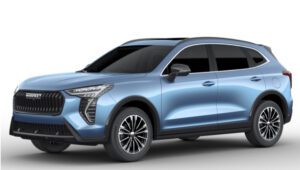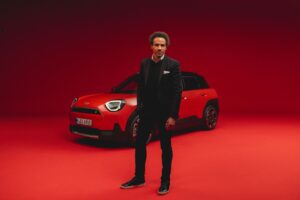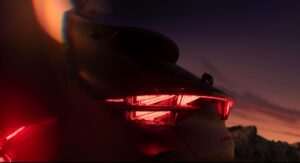A Ford experience
You’d have to have your head in the sand not to know that the world we live in undoubtedly has a few environmental issues with one of the biggest culprits being our population and moreover, where it chooses to reside. Estimates come in that there will be 9 billion of us by 2050 and although there would appear to be ample room, we (around 90% of us) like to live in very close proximity to each other – a mere 3% (estimated amount of the green planet taken up by urban cities). This, of course, causes gridlock – and not just on the roads.
Ford invited us to India to attend their Ted Talks Symposium themed ‘City of Tomorrow’, it was a chance to listen to some of the planet’s best visionaries, innovators, policymakers, and academics, give us their insights to how cities will cope with the world’s continual growth.
For those of you that may be unaware, ‘TED is a nonprofit devoted to spreading ideas, usually in the form of short, powerful talks (18 minutes or less). TED began in 1984 as a conference where Technology, Entertainment, and Design converged, and today covers almost all topics — from science to business to global issues — in more than 100 languages. Meanwhile, independently run TEDx events help share ideas in communities around the world’ – so now you know.
 Anyone that has been to a city in India would, as I did, struggle to understand why such a seemingly chaotic infrastructure would be a suitable place to hold such a progressive event, but as I went on to learn, in many ways it was perfect – so much so that in fact, even the hotel it was held at (the Andaz Delhi), came with the slogan ‘come intrigued, leave inspired’
Anyone that has been to a city in India would, as I did, struggle to understand why such a seemingly chaotic infrastructure would be a suitable place to hold such a progressive event, but as I went on to learn, in many ways it was perfect – so much so that in fact, even the hotel it was held at (the Andaz Delhi), came with the slogan ‘come intrigued, leave inspired’
Before attending the headlined symposium we were given the chance to speak with arguably two of Ford’s most forward-thinking employees. First of all Rajendra ‘Raj’ Rao CEO of Ford Smart Mobility; Ford India, followed by Sheryl Connelly Manager, Global Consumer Trends and Futuring for Ford Global.
 Raj is an accomplished innovator in his own right (mainly in technology) and therefore an ideal person to help Ford be both an automotive and a mobility company. He believes that the industry was (and is) going through a transformation process, and that ‘mobility’ is becoming a very healthy place for disrupters. He says that Ford itself, although having a century of experience in the automotive business, will have to question the future and its role in it. The City of Tomorrow Symposium puts that question in focus in terms of what is the aspiration for mobility across the world? And is what we are encountering today in terms of congestion, gridlock and lack of mobility a future that will be sustainable?
Raj is an accomplished innovator in his own right (mainly in technology) and therefore an ideal person to help Ford be both an automotive and a mobility company. He believes that the industry was (and is) going through a transformation process, and that ‘mobility’ is becoming a very healthy place for disrupters. He says that Ford itself, although having a century of experience in the automotive business, will have to question the future and its role in it. The City of Tomorrow Symposium puts that question in focus in terms of what is the aspiration for mobility across the world? And is what we are encountering today in terms of congestion, gridlock and lack of mobility a future that will be sustainable?
What he is most concerned about is what actions should we take. He is convinced that we (the people) should be allowed to access the riches of a community without being burdened by a lack of mobility and in his opinion, the key to this is partnerships. Governments, institutions and businesses, all need to find a way to let citizens become more empowered and in turn, work together to deliver change, and that it all starts with cities.
Part of the reason the event was held in India was that (due to its current infrastructure), the opportunity for improving the human journey here is huge – and maybe the chance to ‘leapfrog’. Antiquated methods of transportation are one thing, but the solution is much broader than just a reassignment of traditional vehicles, it’s about constructing a multi-mobility journey. As we think about the City of Tomorrow, Raj said there is a strong emphasis on shared mobility, everything from existing rail and transport to highly evolved and ever-evolving shared methods – and removing customer ‘pain points’ is paramount.
Ford have a ‘three category’ design thinking approach – the Now, (the next vehicle design etc), the Near (what can AI and technology do for us, intermediately) and the Far (what is the mobility vision), however, according to Raj, all these three frames need to be acted on right now because he is sure that the ‘near’ and the ‘far’ are going to demand much more transportation solutions than we care to imagine.
‘Can’t solve yesterday but can anticipate tomorrow’
Every city is unique, so they need to adapt their transport to what infrastructure makes sense. Work has already been done to research transportation issues and how to ease or rectify problems. Using test cities and big data, opportunities are emerging to reduce journey costs and relieve city stress points. Conducting first mile/last mile trials that include shuttle services. Dynamic shuttles that go to businesses and work in a more flexible way, such as extra resource in peak times. Ride-hailing plus ride and vehicle sharing are ways to significantly reduce journey costs, companies such as Zoomcar, that give access to a vehicle without having to own it.
The idea is to take the learnings and offer them up to cities as conversation starters. And above all else, being open to unconventional suggestions.
 Sheryl Connolly is a Futurist, (yes it is a real job) and after 20 years in the role she has heard most fortune telling joke there is – she even predicted mine coming. Her job is to help the company imagine what customers will want in 3-5 years and luckily enough, she is driven by genuine curiosity.
Sheryl Connolly is a Futurist, (yes it is a real job) and after 20 years in the role she has heard most fortune telling joke there is – she even predicted mine coming. Her job is to help the company imagine what customers will want in 3-5 years and luckily enough, she is driven by genuine curiosity.
According to Sheryl, her job is to tell people that no-one can predict the future. She believes that we all have our own deep seeded values and view of how the world is and this translates to how we see the future. Her job is to slow down the conversation. She spends most of her day going ‘what if you’re wrong or have you considered the possibilities’. It’s when she hears comments such as ‘that will never happen in my lifetime’ that she loves to start.
‘What would that look like if it did happen?’ From an organisation such as Ford, this approach forces them to be more robust in their thinking and therefore their strategies are more nimble. From a personal point of view, she hopes she will never hear ‘in my wildest dreams I never thought about that’, to her, it’s far better for to hear ‘oh yes we did discuss this’. In short, she doesn’t know which possibilities will eventuate so we should explore them all.
She works for a car company but she’s not a car person. her job is not to talk about cars, it’s to notice changes in other categories and report them – it’s up to Ford to translate where necessary or applicable. She travels a lot and tries hard to get a global perspective. To her, it’s better when cultures or people disagree because that’s how we learn.
Just like cities, to Sheryl, everyone’s view of the future is unique. ‘we will all want something different’. However, in terms of Mobility, she sees ‘sharing/leasing’ as a good place to start and looks to other industries to build a case. Baby boomers bought albums, Gen X CD’s etc – Milleniums don’t own music. The flexibility of ownership – why be stuck with a 2 seater when you often require an SUV, Truck etc.
She cited the likes of China and India ‘leapfrogging’ other nations in cellphone usage as (due to limited landline infrastructure) they could adopt the new technology virtually unhandcuffed. On the subject of the human footprint, she talked about cities going vertical but also pushed this a step further by adding that by making things ‘within walking distance’you can combat obesity, especially if you make the journey fun with ideas such as musical steps.
‘First mile/last mile’ was also raised but again Sheryl had her own take on the subject, with ideas such as an app that picks the best mode of transport, best route, or books a carpark for you as you leave your home.
Although she acknowledges that on the subject of AI, the world is divided, she believes in co-sharing roles with robots to free up human capital (time) but also highlights that human beings also need a purpose – so idly sitting around is mentally unhealthy. She is sure that as technology advances more opportunities will appear.
In terms of the future, what she hopes for is a city where all the problems are solved – ‘No city should be ashamed of its core.’ But she concludes that ‘Conversations need to be regionalised – There is no silver bullet’
 Ted Talks
Ted Talks
There is a very American feel about Ted Talks. The hosts are very animated and the crowd is encouraged to stamp their feet and get vocally involved. The opening addresses are stimulating and uplifting combining subject matter to Ted philosophies – ‘Mobility includes Sociability’, Ted says ‘there is no movement unless people are at the centre of the equation.’ and the ‘Idea’s heard here are worth spreading, to make the world a better place.’
The format included guest speaker monologues, inspiring stories, and an open forum debate.
Wannis Kabbaj (an expert in logistics – UPS) began the session with some alarming figures. Globally, hundreds of millions of people leaving the country and heading for the city streets where the promise of a better life is considerable. But they find that the dream is more of a scream. Most cities can’t breathe as they are growing at a pace that has never been seen before – more roads, more cars equals an ever-expanding sprawl.
Traffic delays and wasted fuel in India alone costs around $21billion per year. The pollution in China is estimated to cause over 1 million deaths per year. ‘We need new solutions, a new source of inspiration’
He suggested that the solution can be found within – via the sophistication of our own vascular system. ‘All the veins and arteries in our body are performing miracles of logistics every day. Biology has been a proven transportation system way longer than UPS. It has finds countless ways to move proteins and nutrients and gasses around the body. Using around 100,000km of blood vessels inside us, it. But if you look at cities, most of our roads are very one dimensional. We could be much bolder with underground systems, put most of our trains to better use. We could also go higher, what if we could glide around on gyroscopes. Utilise drones. Essentially created 3D transportation systems for the city.
He gave an example of a person that has already been driving for 1 hour, and he’s late. He doesn’t know it, but the truck in front of him is empty, and the 85 cars around him only one person in each of them. ‘Biology would never be this inefficient’.
 Inspirational interludes were given thanks to the mountaineers Nungshi & Tashi Malik climbing Everest and a story from Barefoot College International CEO Meagan Fallone – rather than inviting the (seemingly obvious) technically adept town male to train – taking a community-based woman and teaching – the idea being that they would actually remain in the small town.
Inspirational interludes were given thanks to the mountaineers Nungshi & Tashi Malik climbing Everest and a story from Barefoot College International CEO Meagan Fallone – rather than inviting the (seemingly obvious) technically adept town male to train – taking a community-based woman and teaching – the idea being that they would actually remain in the small town.
Raj hosted a spirited (but surprisingly pointed debate that involved government officials and industry leaders). It spoke of cities ‘straining under the pressure of growth’ and conversely the need to ‘liberate the human journey’. They predicted that as urbanisation continues, we will be looking at double the amount of vehicles on city roads within the next seven years – and when I relate that back to Auckland traffic, I can’t help but shudder. They agreed that there was a need to overcome the rigid transportation issues and somehow ease congestion and that we need to change how we look at urbanisation, build up not out? Create ‘smart’ cities? Find better ways to recycle water and waste, move from coal to Solar.
Incidentally, currently, Electric Vehicle uptake is only 1.2% globally and a lot of the reluctance is due to the price. However, 2030 is seen as the tipping point due to battery cost coming down.
 Again they spoke of 3-dimensional travel. Underground, overground and even flying (blimps). We did spend a fair amount of time on India’s roading network and Raj openly acknowledges that there is work to be done (let’s say that is an understatement) but working with governments and industry there is an opportunity for less ‘developed’ cities to ‘leapfrog’ others
Again they spoke of 3-dimensional travel. Underground, overground and even flying (blimps). We did spend a fair amount of time on India’s roading network and Raj openly acknowledges that there is work to be done (let’s say that is an understatement) but working with governments and industry there is an opportunity for less ‘developed’ cities to ‘leapfrog’ others
‘If we are to deliver on the promise of human ROI, we will require unconventional methods for solutions’
Mitch Joachim (Terraform ONA) Spoke about ‘high rise’ happier communities. Essentially families living in self-sustainable pods. ‘Food’ cultivated on the side of buildings. Environmentally friendly Cricket homes that allow the farming of protein-rich insects.
It’s safe to say that predicting the future will always be a difficult (somewhat impossible) thing to do. But when you combine environmental issues, population explosions and … you can surely be safe in saying that the move from PIGS (Personal Internal-combustion Gasoline Steel-dominated vehicles) to SEALS (Shareable Electrified Autonomous Lightweight Service vehicles) is inevitable. It would appear that the ICE age is coming to an end. And that with our seemingly inherent need to live on top of each other, the need to build taller rather than wider is a safe bet too. Improved mobility, a healthier planet and happier communities, the City of Tomorrow really is looking up.
For more Ford reviews, click here










